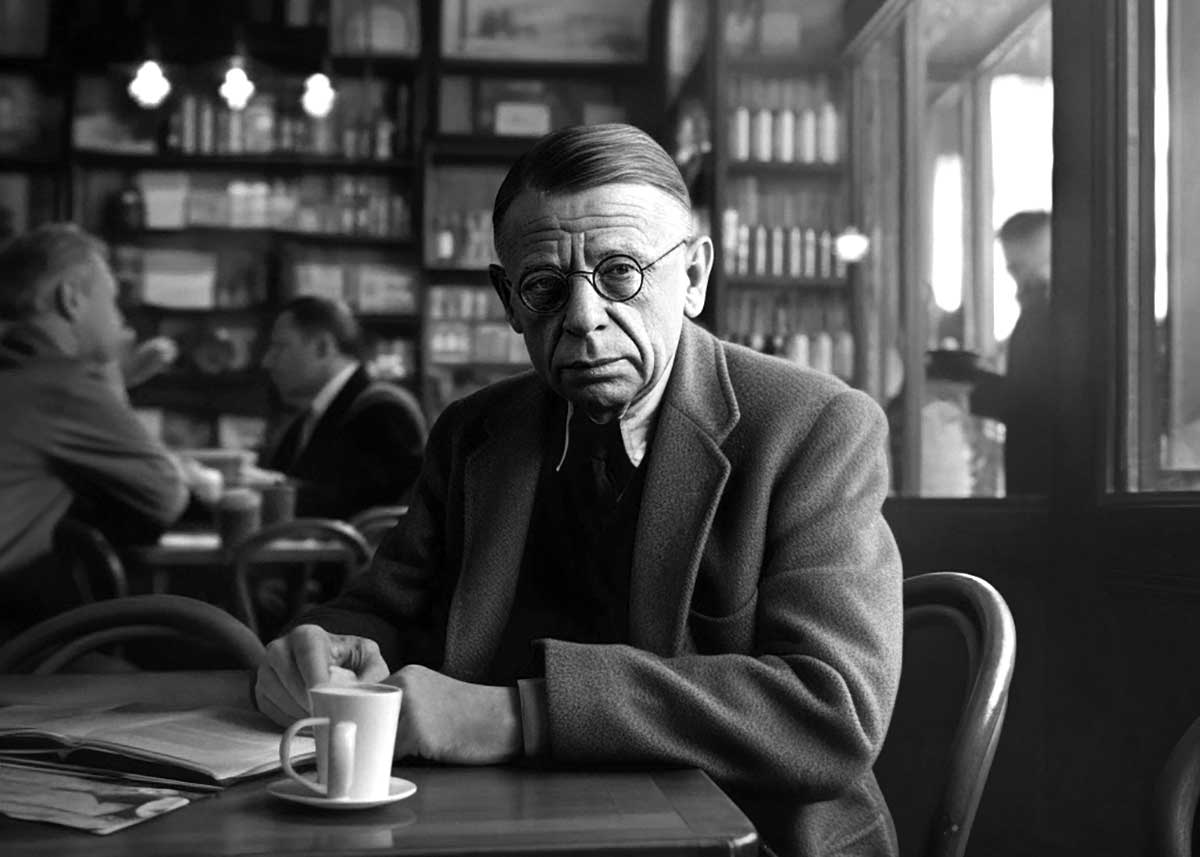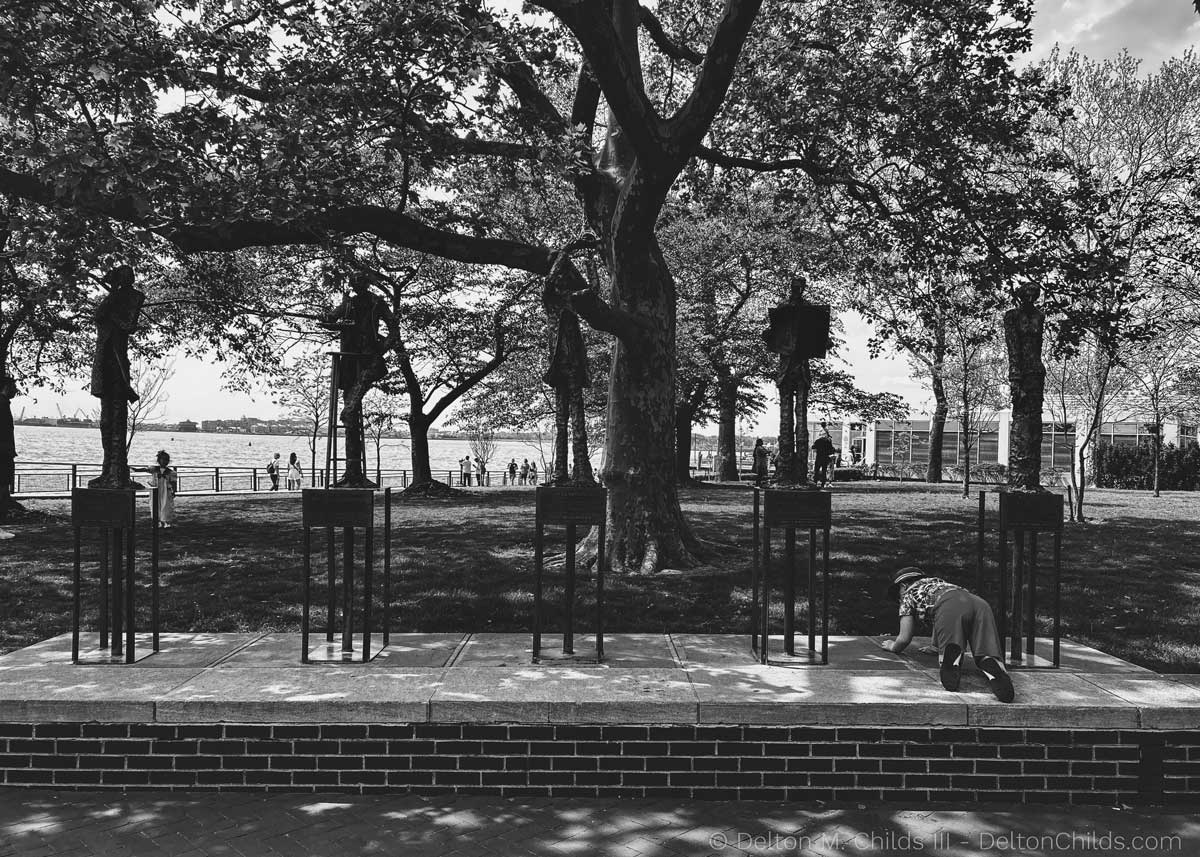Capturing the Essence of Existentialism: Jean-Paul Sartre’s Philosophy Through the Lens of Photography

Sartre’s existentialist philosophy revolves around the idea that we are “condemned to be free” – that is, we are thrown into existence without any predetermined purpose or destiny, and it is our responsibility to create meaning and define who we are through our actions and choices. This emphasis on individual freedom and authenticity has had a profound and lasting impact on various aspects of intellectual and artistic expression, including the realm of photography.

The Connection Between Existentialism and Photography
At first glance, existentialism and photography may seem like an unlikely pairing. However, upon closer examination, it becomes apparent that the two share a common thread: the exploration of the human experience and the quest for authenticity in a world that is inherently ambiguous and ever-changing. In many ways, photography can be seen as a visual representation of existentialist thought, capturing the fleeting moments of life and the ephemeral nature of existence itself.
I believe that photography, like existentialism, is an art form that seeks to portray the world as it is, rather than attempting to impose a preconceived notion or idealized vision of reality. Both existentialism and photography ask us to confront the world in a direct, unmediated way, challenging us to accept the uncertainty and ambiguity of existence and to embrace the freedom that comes with this recognition.
Through the lens of a camera, a photographer can capture the essence of a moment or the emotions of a subject, creating a tangible representation of the human experience. In doing so, your and my photography has the power to evoke existentialist themes such as the passage of time, the inevitability of change, and the importance of living authentically.

As I was backpacking around New York as I was about to enter the subway I noticed a domino just sitting on the railing leading downward. I left it there but took a photograph of this thing. It is an object lost in the world, only part of a whole, existing without purpose & out of place.
Sartre’s Philosophy: Key Concepts and Principles
I write to help clarify my own thoughts about these things so bare with me. To better understand the relationship between existentialism and photography, it is essential to examine the key concepts and principles that underpin Sartre’s philosophy. One of the central tenets of Sartre’s existentialism is the notion of “existence precedes essence” – that is, individuals exist before they have any defined purpose or meaning. This idea stands in stark contrast to the traditional philosophical belief that an individual’s essence, or inherent nature, is predetermined and immutable.
Another crucial aspect of Sartre’s existentialism is the concept of radical freedom. According to Sartre, human beings are fundamentally free agents, responsible for their actions and choices, and possessing the ability to shape their own destinies. This freedom, however, comes with a heavy burden: the weight of responsibility and the anxiety of choice, as individuals must continually make decisions that define their lives and confront the consequences of these choices.
Sartre also places a strong emphasis on authenticity as a core value of existentialist thought. Authenticity involves living in accordance with one’s true self, rather than conforming to societal expectations or external pressures. To be authentic, one must embrace the freedom and responsibility that come with existence, and strive to create a meaningful life through one’s actions and choices.

Contemporary Art and the Influence of Existentialism
Existentialism has had a significant impact on various forms of contemporary art, as artists have grappled with the themes of individual freedom, authenticity, and the search for meaning in an increasingly complex and uncertain world. From literature and theater to painting and sculpture, existentialist ideas have shaped the creative output of countless artists, offering new perspectives on the human condition and the challenges that we face in our daily lives.
In the world of photography, existentialist thought has inspired photographers to explore the depths of human emotion, the fleeting nature of existence, and the beauty of the mundane. Through their work, these photographers seek to capture the essence of what it means to be human, delving into the complexities of emotion, relationships, and the passage of time.
Some of the most iconic photographs of the 20th century, such as those by Henri Cartier-Bresson, Robert Frank, and Diane Arbus, can be viewed through the lens of existentialism, as they offer unique insights into the human experience and the search for authenticity in an ever-changing world.
The Aesthetics of Existentialist Photography
Existentialist photography, as an artistic genre, often focuses on the representation of the human experience in its raw and unfiltered form. This can be seen in the choice of subject matter, the use of light and shadow, and the overall composition of the images.
One of the key aspects of existentialist photography is the emphasis on capturing the “decisive moment” – that is, the precise instant in which an event or emotion is at its most potent and revealing. This idea, popularized by Henri Cartier-Bresson, reflects the existentialist belief in the fleeting nature of existence and the importance of living in the present moment.
In terms of composition, existentialist photography often employs stark contrasts and a sense of isolation or alienation, reflecting the themes of loneliness, anxiety, and the search for meaning that are central to existentialist thought. Additionally, existentialist photographers frequently employ a minimalist aesthetic, using simple compositions and a limited color palette to convey the essence of their subject matter.
The use of light and shadow in existentialist photography also plays a crucial role in creating a sense of mood and atmosphere. By manipulating the interplay between light and darkness, photographers can evoke a range of emotions, from melancholy and despair to hope and resilience, reflecting the complexity and depth of the human experience.

I once watched an interview with photographer Annie Leibovitz. She talked about how odd it was that, in this age of modern digital photography, many people use the sharpness of a photograph as a measure of quality. I agreed with her in this regard. We don’t always see sharp; sometimes, we don’t even look at the people we spend most of our time with. Though we see people daily, we might not notice they got a haircut or changed their appearance dramatically until it’s pointed out. I used to have a septum ring, like what we think of when you envision the ring in a bull’s nose, and one day I had to take it out for dental X-rays. My girlfriend never noticed the ring missing from my nose. When we first met, I had it; I had always had it. How could this be? Maybe her mental image of me does not include the ring, so when she now looks at me, it’s as if it never existed at all. It could also be she hated it so much she doesn’t want to remind me about putting it back in.
Notable Photographers Inspired by Sartre’s Philosophy
Throughout the history of photography, many photographers have been inspired by the existentialist ideas of Jean-Paul Sartre and other prominent figures in the movement. Some of the most notable photographers whose work I’ve heard embody existentialist themes include:
- Henri Cartier-Bresson: Often referred to as the “father of modern photojournalism,” Cartier-Bresson was a French photographer whose work focused on capturing the decisive moment and the beauty of everyday life. His photographs often convey a sense of spontaneity, authenticity, and the ephemeral nature of existence.
- Robert Frank: A Swiss-American photographer, Frank’s seminal work, “The Americans,” is a powerful exploration of post-war American society and culture. Through his candid and unflinching images, Frank captures the loneliness, alienation, and longing for connection that are characteristic of existentialist thought.
- Diane Arbus: Known for her intimate portraits of society’s outcasts and marginalized individuals, Arbus’s photography delves into the complexities of the human experience and the search for identity in a world that often demands conformity. Her work reflects the existentialist emphasis on authenticity and the importance of living according to one’s true self.
- Garry Winogrand: A prolific street photographer, Winogrand’s work captures the energy, chaos, and unpredictability of urban life. His photographs often depict the tension between the individual and the environment, reflecting the existentialist struggle to find meaning and purpose in an uncertain world.
Techniques For Capturing Existentialism in Photography
For photographers like me, seeking to incorporate existentialist themes into their work, there are several techniques and approaches that can be employed to achieve this goal:
- Embrace spontaneity: Rather than staging elaborate compositions or relying on post-processing, focus on capturing the world as it is, in all its raw and unfiltered beauty. Look for the decisive moment and be open to the unexpected.
- Focus on the human experience: Existentialism is fundamentally concerned with the individual and the challenges that we face in our daily lives. Seek out subjects and situations that reveal the complexity, depth, and authenticity of the human experience.
- Experiment with light and shadow: Use the interplay between light and darkness to create a sense of mood and atmosphere, and to evoke the emotions and themes that are central to existentialist thought.
- Be mindful of composition: Employ simple, minimalist compositions that draw attention to the subject matter and convey the essence of the scene. Be mindful of the use of space and the relationships between objects and individuals within the frame.
- Embrace ambiguity: Existentialism acknowledges the inherent uncertainty and ambiguity of existence. Be open to the idea that your photographs may not offer clear answers or definitive interpretations, but rather serve as a catalyst for reflection and dialogue.
The Impact of Existentialist Photography On Modern Culture
The influence of existentialist photography can be seen in various aspects of modern culture, from advertising and fashion to journalism and documentary filmmaking. By challenging conventional notions of beauty, truth, and meaning, existentialist photographers have expanded the boundaries of artistic expression and encouraged a more nuanced, introspective approach to the visual representation of the world.
In an age characterized by information overload, consumerism, and the relentless pursuit of perfection, existentialist photography serves as a reminder of the importance of authenticity, individuality, and the search for meaning in our lives. Through their work, existentialist photographers have not only enriched the field of photography but also contributed to a broader cultural conversation about what it means to be human in the modern world.
The Role of Existentialist Photography in Philosophical Discourse
Existentialist photography occupies a unique position within the broader context of philosophical discourse, as it offers a visual representation of the themes and ideas that are central to existentialist thought. By capturing the human experience in all its complexity and depth, existentialist photographers have provided a valuable means of engaging with and exploring existentialist philosophy in a tangible, accessible way.
Furthermore, existentialist photography serves as a powerful toolfor philosophical inquiry and reflection, offering a means of exploring and challenging our assumptions about the world and our place within it. Through the lens of a camera, we are able to confront the ambiguity and uncertainty of existence, and to grapple with the fundamental questions that have preoccupied philosophers for centuries.
In this way, existentialist photography can be seen as a form of visual philosophy, offering a unique perspective on the human experience and the search for meaning in a world that is often seen as chaotic and unpredictable. By capturing the essence of existence in all its beauty and complexity, existentialist photographers have created a powerful testament to the enduring relevance of existentialist thought.
The Enduring Relevance of Existentialism and Photography
The relationship between existentialism and photography is a rich and complex one, reflecting the shared emphasis on the search for meaning and authenticity in a world that is often seen as uncertain and chaotic. From the key concepts and principles of Sartre’s philosophy to the aesthetics of existentialist photography and the impact of this genre on modern culture and philosophical discourse, the connection between these two fields of inquiry is both profound and enduring.
As we continue to grapple with the challenges of existence in the modern world, existentialist photography offers a powerful means of exploring and confronting the fundamental questions of human existence. By capturing the beauty, complexity, and raw emotion of the human experience, these photographs remind us of the importance of living authentically, embracing our freedom, and finding meaning in a world that is often unpredictable and challenging.
Whether viewed as a form of art, philosophy, or both, existentialist photography offers a unique perspective on the human condition, inviting us to engage with the world in a more nuanced and introspective way. Through the lens of a camera, we are able to capture the essence of existence itself, and to explore the challenges and complexities of the human experience in all its beauty and depth.

